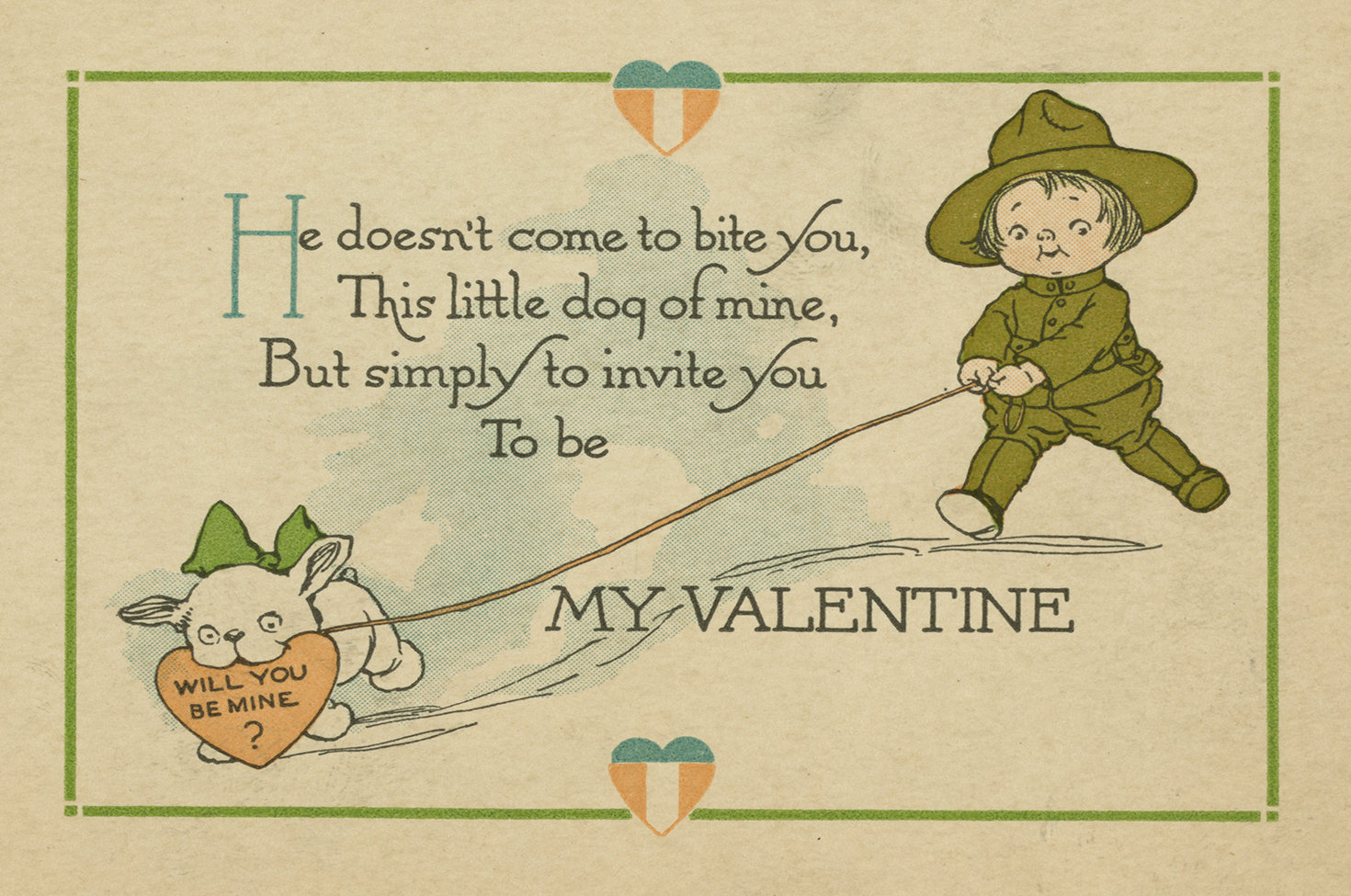
A valentine, 1916. Library of Congress, Prints and Photographs Division.
• “What Happened to Playboy’s First Black Cover Girl?” (Zora)
• “The 200-Year-Old Diary That’s Rewriting Gay History.” (BBC News)
• A plan to build a Smithsonian women’s history museum has been approved by the U.S. House of Representatives. (Associated Press)
• Do slavery reenactments confront or trivialize? (The New Yorker)
• On Maurice Sendak. (Catapult)
• Because it’s that time of year, here are some love letters. (Library of Congress Blog)
• “Family Pays £160,000 After Damaging Medieval Site in England.” (Medievalists.net)
• Fall down an internet rabbit hole and scroll through Bob Damron Address Books, “travel guides [that] became almost survival guides to gay and queer travelers across the United States…Much like the Green Books of the 1950s and 1960s, which African Americans used to find friendly businesses that would cater to black citizens in the era of Jim Crow apartheid, Damron’s guidebooks aided a generation of queer people to identity sites of community, pleasure, and politics.” (Mapping the Gay Guides)
• Construction crews working on the U.S.-Mexico border wall are blowing up Native burial sites. (BBC News)
• The backstory behind the theft of a plaque about slavery in Charlottesville. (Washington Post)
• Revisiting the Astor Place Riot. (The Outline)
• This week in obituaries: the founder of Ladysmith Black Mambazo, an Italian soprano, an actress, a lesser-known Koch brother, a catcher, and a photographer.